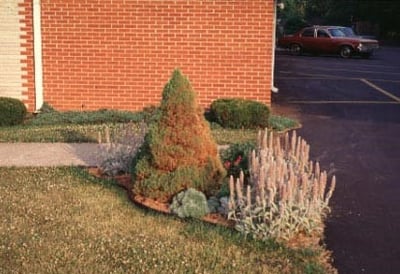 With the change in seasons naturally come changes to your commercial landscaping maintenance. In addition to final mowing, fall is the time to think about cleaning up your commercial property and preparing for the winter ahead.
With the change in seasons naturally come changes to your commercial landscaping maintenance. In addition to final mowing, fall is the time to think about cleaning up your commercial property and preparing for the winter ahead.
These five tasks will help to protect your landscape during the winter months, allowing it to rest and be rejuvenated next spring. They will also help ensure that your property stays looking as it should throughout the year, especially during the holiday season.
Fall Clean-up and Winter Prep in 5 Steps for Kentucky Commercial Landscaping
1. Leaf Removal
Most people love fall for the changing leaf colors. The beautiful reds, yellows and oranges provide quite a spectacular show before dropping from the trees and bushes. Then comes the clean-up.
We can adjust your maintenance contract according to your budget and the specific leaf-removal needs of your property. Your standard contract may only include one leaf removal. In this case the removal is delayed until all leaves have fallen, usually in December. Of course, this means your property will look a little messy until then.
A better plan is to include at least 3 leaf removals so we can keep your grounds looking attractive while removing potential pests and plant diseases promptly.
One caveat: We recommend not trimming or cutting back your perennials in the fall. Many beneficial insects, including many species of butterflies, overwinter in our area. They take shelter on the stems of perennials, so cutting these back in the fall may destroy them. Save this task for spring and enjoy the beauty and the benefits of these creatures.
2. Aeration and Overseeding
 Aerating and overseeding your turf is like giving your landscape a one-two punch of invigoration for a healthy start next spring. Think of it as first giving your lawns breathing room (aeration), and then preparing for new growth (overseeding).
Aerating and overseeding your turf is like giving your landscape a one-two punch of invigoration for a healthy start next spring. Think of it as first giving your lawns breathing room (aeration), and then preparing for new growth (overseeding).
The process of aeration involves removing cores of grass and soil, allowing water, air and nutrients to reach plant roots directly. Aeration also reduces thatch – that accumulation of grass clippings and other organic matter that collects in a tangled mess on the surface around the grass stems. Additionally, aeration improves the lawn’s ability to collect and absorb rainfall. This helps reduce stormwater runoff and encourages organic material to penetrate deeper into the soil and maximize absorption of essential nutrients.
Overseeding is a crucial aspect of keeping Kentucky fescue lawns at their best. Turf fescue is a clumping grass (it doesn’t send out runners like Bermuda grass does) so it relies on new seeds to be replenished. Since mowing cuts off most naturally occurring seed heads during the growing season, fall is a good time to sow new seeds and fill in the thinning lawn.
3. Irrigation Winterization
Avoid nasty water leaks—and the costs and complications that follow due to freezing pipes—and arrange for your irrigation system to be properly put to bed for the winter. A qualified irrigation technician will drain your system to remove all standing water from pipes and valves before the freezing temperatures set in, leaving it well-prepared to go back to work next spring. Backflows make tempting targets for thieves when they aren’t pressurized with water. Talk to your landscaper about options to protect this valuable piece of equipment over the winter.
4. Trash Removal and Winter Weeding
If these two tasks aren’t included in your commercial landscaping contract, you should consider adding them. We can visit your property every other week throughout the winter to keep it looking its best. In the winter, trash is more visible after the leaves are gone.
And we can keep the winter weeds – yes, they do exist in Kentucky – under control. All of this adds up to a clean, attractive property that your clients are sure to notice.
5. Disease Management and Prevention
 After the leaves have fallen and been removed from the site, we can take a closer look at your plants to assess their overall health and check for signs of any potential disease or pest infestations.
After the leaves have fallen and been removed from the site, we can take a closer look at your plants to assess their overall health and check for signs of any potential disease or pest infestations.
One particular pest we deal with in Kentucky on a regular basis is the spruce spider mite. In fact, nearly every spruce tree in Kentucky has spider mites. They routinely cause damage every year, varying between location and tree species.
The best way to deal with pests and fungal disease is to break the cycle of contagion with Integrated Pest Management (IPM). Fall is the perfect time to halt the progression of any plant problems, protecting them for winter, and readying them to awaken and thrive next spring.
Thinking and Working One Season Ahead
Let Klausing Group help you with your fall commercial landscaping tasks. We are happy to discuss the best ways you can plan and prepare in autumn to protect your valuable landscape through the winter – making sure it will be ready to spring back vigorously next year.
Call us today, in Lexington at 859-254-0762 and Louisville at 502-264-0127. Or, if you prefer, fill out our contact form and we’ll be in touch soon.
Image sources: spruce spider mite damage


